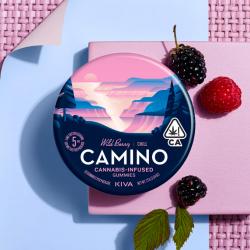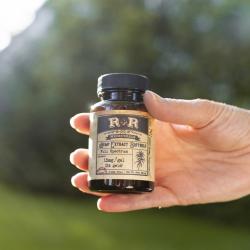What Are Cannabis Trichomes?
Cannabis trichomes are resin glands decorating the flower buds and surfaces of marijuana leaves. They are shiny and sticky with a strong aroma that is sweet, aromatic, and woodsy.
Trichome Etymology
Trichome, in general, means a small outgrowth in a plant. The term originates from trikoma, a Greek word that means hair growth. Cannabis trichomes house terpenes and cannabinoids, and those separated from the plant are referred to as Kief.
What Do Trichomes Do?
Trichomes produce cannabinoids, terpenes, and flavonoids and give cannabis the healing power which interacts with our endocannabinoid system to relieve nausea, pain, inflammation, and insomnia. Cannabis extraction experts use solvents to separate trichomes from the plant. In contrast, producers use carbon dioxide, butane, or ethanol to separate cannabis trichomes from the plant, leaving behind terpenes and cannabinoids. Concentrates contain a higher percentage of cannabinoids and are considered cost-effective for individuals seeking high levels of CBD or THC.
Protection for the Plant
Plants have trichomes that resemble hair, but unlike animal hair, trichomes are living cells. Trichomes have varying appearances, structures, and textures, with some shaped like a star and others short and curly as well as long and straight. Just like mammal hair, trichomes offer camouflage and insulation to plants. Trichomes act as insulating agents by protecting leaf cells from frost and minimizing evaporation from the plant due to excess heat and wind. In most cases, trichomes keep herbivorous insects and larger herbivores at bay due to their stiff and irritating nature.
The Anatomy of Trichomes
The epidermal cells support the trichome while the hypodermal cells inside the stalk transport nutrients to the gland head. A basal cell on top of the stalk supports the gland head and weakens as the mature flowers dry. Stripe cells are located at the gland head's base and contain secretory cells that transport nutrients to the phloem in the secretory vesicle for terpenoid and cannabinoid metabolism.
How Big Is a Trichome?
Trichomes vary in size, ranging from 10 to 500 micrometers. Trichomes look like tiny hairs positioned on the cannabis plant's surface when observed through a microscope. Growers are advised to focus on trichomes resembling the shape of mushrooms as they contain medicinal and psychoactive compounds, making the cannabis plant unique and desirable.
Trichome Chemistry
Cannabigerol (CBG) is a precursor for various cannabinoid compounds. It is chemically transformed into tetrahydrocannabinol (THC), Cannabichromene (CBC), Cannabidiol (CBD), and other compounds in trichomes. Below is a list of various cannabinoids found in trichomes.
- THC: It is a phytocannabinoid compound found in cannabis plants and is known to make users high. It is, however, used to treat insomnia, anxiety, and relieving pain.
- THCV: Tetrahydrocannabivarian is also found in cannabis plants and has many medical benefits. It helps patients with diabetes, stimulates bone growth, and may help to treat Alzheimer's disease.
- CBD: It is found in cannabis plants and treats various issues like anxiety, depression, and appetite and relieves pain.
- CBG: Research indicates that it regulates sleep and appetite, alleviates pain, and enhances pressure and motivation.
- CBN: The compound is found in cannabis plants but can also be produced synthetically. The blend helps in relieving chronic muscle pain, reducing glaucoma symptoms, and treating Epidermolysis Bullosa.
Different Types of Trichomes
Trichomes are not the same, with at least six different types. The main types include:
- Bulbous trichomes: These are tiny, clear glands proliferating the plant's surface. They contribute to the crystalline nature of cannabis plant flowers and buds' thickness.
- Capitate sessile trichomes: These are visible with the help of a microscope and appear in greater concentrations than bulbous counterparts. They are located on the underside of leaves and are shaped like mushrooms. They have secretory cells which are responsible for terpene and cannabinoid production.
- Capitate stalked trichomes: These are the most abundant, recognizable, and visible types of trichomes. They contain a large bulb head with secretory cellsto transfer nutrients via the stalk to the head and are shaped like a mushroom.
The abundance of trichomes in a cannabis plant indicates the flavor and cannabinoid content of the particular plant. Cannabinoid content depends on various factors such as the environment, genetics, and the grower's skill.
More to Read:
Previous Posts:






